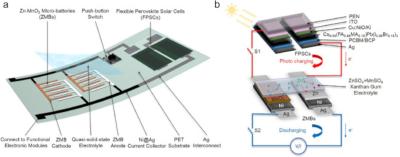Sekisui Chemical to install film-type perovskite solar cells in Umekita (Osaka) Station
Sekisui Chemical has announced that it will provide and install film-type perovskite solar cells to Umekita (Osaka) Station, to be developed by West Japan Railway Company.
The Company claims it has achieved outdoor durability of 10 years equivalent by means of original “sealing, film formation, materials and process technology,” creating a 30 cm-wide roll-to-roll manufacturing process. This manufacturing process has been successfully used to produce film-type perovskite solar cells with power generation efficiency of 15.0%. Currently, work is aiming to establish a manufacturing process for 1 m-wide rolls that offers more improvements in durability and power generation efficiency with a view to practical application and the New Energy and Industrial Technology Development Organization (NEDO) Green Innovation Fund is being leveraged to speed up development.


